Interview: Antony Croston, Trelleborg Offshore
Antony Croston is Business Group Director at Trelleborg’s offshore operation in Houston, responsible for the externally-facing functions of the business covering engineering, business development and project management.
MTR caught up with Croston ahead of next week’s Offshore Technology Conference (OTC) in Houston to discuss some of Trelleborg’s latest developments in buoyancy, FEA and engineering analysis, and fire suppression solutions.
What is dynamically adjustable buoyancy, and how does this technology benefit its users?
Dynamically adjustable buoyancy is a patented technology whereby the amount of uplift acting within a structure can be increased or decreased during service. Its primary application is within the ‘subsea shuttle’, a developmental concept that is intended to provide a cost-effective way of subsea structure installation or chemical injection. For the installation version of this concept, payloads are ‘shuttled’ from the surface to the seabed via a submersible barge, controlled via wire rope deployed to two service vessels. Once in position, the buoyancy can be removed from the barge through pumping as it is no longer needed, and can be used elsewhere on other barge systems. Furthermore, if recovery of the payload is required at some point in the future, the dynamically adjustable buoyancy can be pumped back into the subsea shuttle to allow accurate trimming of weight, enabling precise control of its recover to the surface with wire rope payout length. We believe that this technology offers a credible alternative to traditional heave-compensated crane installation from a vessel, especially as the buoyancy is reusable and strongly customizable.
Please describe Trelleborg’s new multi-functional buoyancy solution, Helically Grooved Buoyancy. How did this product come to be, and what are its chief advantages?
In addition to providing critical uplift to drilling risers, the incorporation of the patented helically grooved technology dramatically improves operational drilling windows. The design achieves this through a combination of reduced drag and the effective suppression of Vortex-Induced Vibration: a common problem with drilling risers in high currents. The helical grooves actually channel water around the riser and convert it into a rotational flow, which ‘pins’ the riser in place to lower drag forces. The product is a result of a joint development exercise between Trelleborg Offshore and Diamond Offshore Drilling, and it has been thoroughly qualified in simulations and hydrodynamic testing, as well as through successful deployment on a number of drilling rigs in the Gulf of Mexico. With the combination of VIV mitigation and low drag, performance has been shown to rival fairings, yet this integral solution comes without the operational drawbacks of increased riser running time. The net result is the ability of drilling rigs to operate in higher currents, with greater time available for disconnect operations in the event of bad weather.
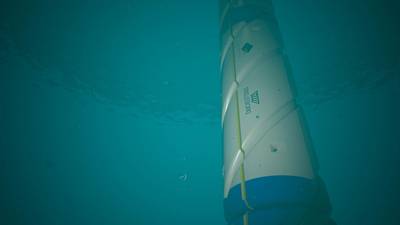 (Photo: Trelleborg)
(Photo: Trelleborg)
How does engineering analysis at the start of a project lead to more technically sound designs? Will you please provide a few examples?
Generally, every project starts with engineering analysis at pre-FEED and FEED stages. Here, ancillary equipment provided by Trelleborg’s offshore operation is typically designed based on experience, or with rough parameters suitable for a system-level design. By incorporating engineering analysis into Trelleborg’s product engineering teams, products can be designed with the system in mind. More importantly, the overall impact of a design on the rest of the system can be assessed to provide the best optimization within the broadest parameters. For example, changes to the position, spacing or even shape of distributed buoyancy modules can be made to provide the absolute highest fatigue life of a riser, as opposed to the traditional approach with equal spacing and standardized sizes. It enables us to ‘speak the language’ of the overall system and ensure that we are communicating the potential options that can be considered at pre-FEED and FEED stage. Furthermore, engineering analysis allows us to convey the true impact of design improvements to contractors and operators. In the example of our helically grooved buoyancy, it gives us the ability to convert the tested values of drag and VIV suppression into tangible terms such as the increase operational uptime or reduction in fuel usage. This is essential for us to be able to effectively communicate the benefits of the technology.
What is Trelleborg doing to help minimize fire escalation on oil and gas rigs?
We are currently doing several things to help minimize fire escalation on oil and gas rigs including developing our next-generation Firestop material at our in-house laboratory in Norway. Based on proven technology, the material is lighter and thinner than our first-generation material. Both versions are used to protect personnel and equipment by providing time to evacuate people, close down critical equipment and for responders to gain control of a fire. The newly formulated compound allows for manufacturing processes such as extrusion and press molding that could not be done previously, enabling us to better support our customer’s project needs and reduce both costs and lead time.
 (Photo: Trelleborg)
(Photo: Trelleborg)
When you look at today’s offshore oil and gas market, where do you see Trelleborg’s best opportunities for growth?
Our best opportunities for growth have been when we’ve aligned ourselves with our customers’ needs, and we see this only getting more important moving forward. All companies today are looking for ways to reestablish competitive advantage through efficiency, technology, responsiveness or any combination of the three. By meeting regularly with our clients and understanding their objectives, we are gearing our own focus to supporting them in achieving their goals as much as possible. Without doubt, solutions that improve the efficiency of operations without compromising safety are proving to be the most attractive opportunities at the moment.



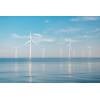
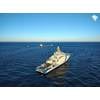
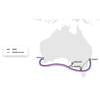
![Microplastic beads seen in the central tube of a copepod [their intestinal tract], as evidenced here, fluorescently labelled beads help with visualization and identification. © PML](https://images.marinetechnologynews.com/images/maritime/w100h100padcanvas/microplastic-beads-seen-166795.jpeg)

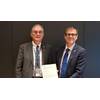










 December 2025
December 2025



